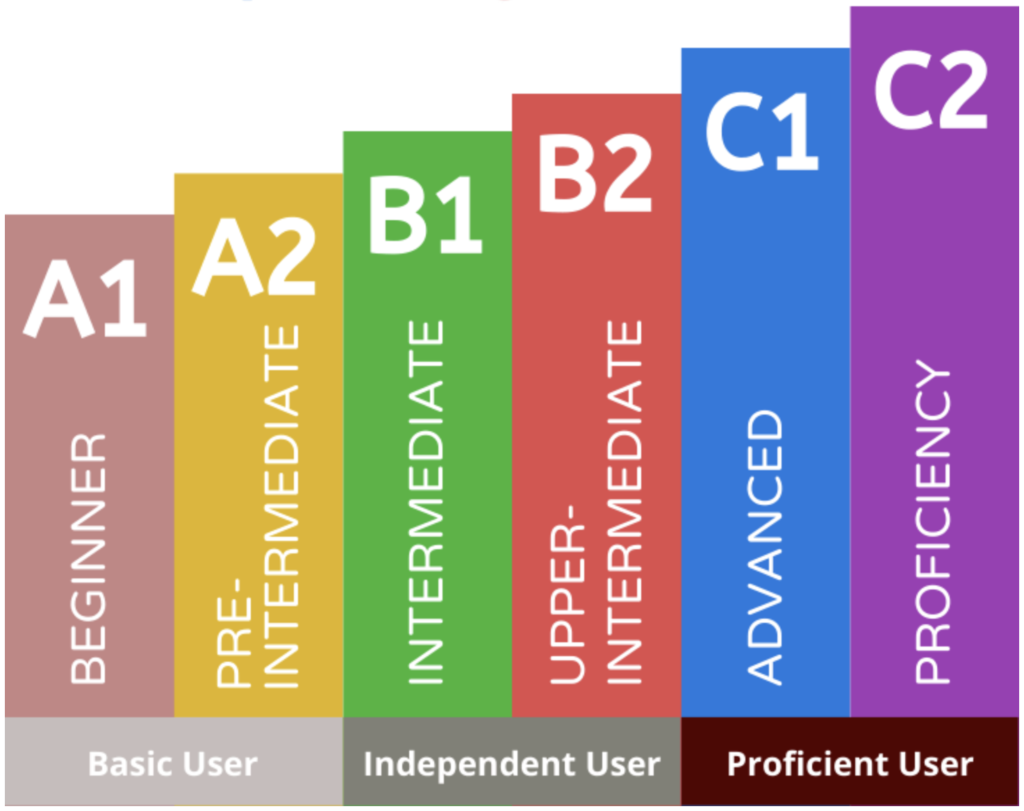The Common European Framework of Reference for Languages (CEFR) is an international standard used to assess and describe language proficiency levels. Developed by the Council of Europe in the 1990s, the CEFR provides a structured framework for teaching, learning, and assessing languages across educational systems. It defines six levels of language proficiency, from A1 (Beginner) to C2 (Proficient), which help educators and learners understand and measure progress in language acquisition.
For second language learners, it has become an untold tradition to learn until a B2 level in order to be considered bilingual or fluid enough in the language to have daily interactions without getting lost in the meaning. —Starter, Beginner (A1), Elementary (A2), Intermediate (B1), and Upper Intermediate (B2)—represent stages of writing development in language learning, as defined by the Common European Framework of Reference for Languages (CEFR). Each level reflects the progression in writing skills, from basic sentence structure to complex expression, enabling learners to gradually improve their writing fluency and coherence.
Because of the nature of the blog, these concepts have been kept focused into the reading skills that learners should have before moving into the next zone as each level builds on the preceding one.
Starter (Pre-A1):
- Reading Focus: Learners at this stage can recognize familiar words and basic phrases in simple texts, such as signs or labels, but their comprehension is minimal.
- Research Insight: Early stages focus on sight vocabulary and building phonemic awareness, as learners rely on repetitive patterns to identify familiar words (Ehri, 2005).
Beginner (A1):
- Reading Focus: At this level, learners can understand familiar words, basic sentences, and phrases in short texts, such as descriptions of everyday objects or actions. They may rely on context and illustrations to interpret meaning.
- Research Insight: Studies show that A1 readers benefit from extensive reading, which emphasizes exposure to simple, engaging texts to build vocabulary and fluency (Krashen, 1989).
Elementary (A2):
- Reading Focus: Learners can read and understand simple texts about familiar topics, such as personal interests or daily routines. They start to comprehend main ideas and identify specific information, though with limited inference.
- Research Insight: According to Nation (2009), repeated exposure to vocabulary in contextualized reading helps A2 learners to improve word recognition and basic comprehension skills.
Intermediate (B1):
- Reading Focus: Learners can grasp the main ideas in straightforward texts related to work, school, or leisure. They are also able to understand simple narrative and descriptive text with some predictability.
- Research Insight: Research suggests that scaffolding at this level is essential; intermediate readers benefit from pre-reading strategies like predicting content and using context clues to interpret unfamiliar vocabulary (Grabe & Stoller, 2002).
Upper Intermediate (B2):
- Reading Focus: At this stage, learners can understand more complex texts with both concrete and abstract themes. They can grasp the nuances in articles and reports, making inferences and evaluating content.
- Research Insight: Grabe (2009) highlights that B2 readers benefit from practice in critical reading and inferencing, as well as strategies to manage longer, authentic texts that introduce new vocabulary and idiomatic expressions.
References
- Ehri, L. C. (2005). Learning to Read Words: Theory, Findings, and Issues. Scientific Studies of Reading.
- Grabe, W. (2009). Reading in a Second Language: Moving from Theory to Practice. Cambridge University Press.
- Grabe, W., & Stoller, F. L. (2002). Teaching and Researching Reading. Pearson.
- Krashen, S. (1989). We Acquire Vocabulary and Spelling by Reading: Additional Evidence for the Input Hypothesis. The Modern Language Journal.
- Nation, I. S. P. (2009). Teaching ESL/EFL Reading and Writing. Routledge.






No comments:
Post a Comment